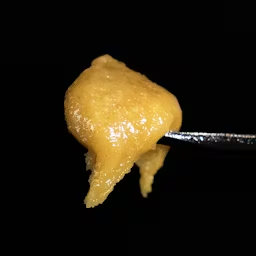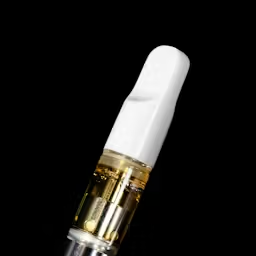
Kashmir Bamboo Cones (200-count) + Mini Grinder
Slow, even burn. USA-made. Great bulk value for sessions and parties.
A field-tested, hype-free walkthrough that gets you from “never grown” to jars you’re proud of—without burning cash or time.

Autoflowers transition to bloom based on age, not light schedule. That means you can run a single, simple cycle—18/6 or 20/4—from sprout to harvest, keep power predictable, and never worry about light leaks. In small apartments, dorms, or busy homes, that “set-and-hold” approach beats micromanaging timers and blackout curtains. The compromise is time: autos give you less recovery window if you overwater or stress them—so we keep moves minimal and environment steady.
If you’re starting in a 2×2, run one plant in a 3–5 gal fabric pot. It’s easy to water, easy to train, and easy to light evenly. In a 3×3, run two plants in 3–5 gal or four smaller plants in 2–3 gal if you already own a decent light. Keep the frame simple: a modest LED board, an inline fan with a carbon filter, and one clip fan to ripple the leaves.

Consistent structure and forgiving feeding—solid first-run genetics from a trusted seed bank.
Autos aren’t divas, but they love consistency. Think ranges, not perfection. Seedlings are happiest at 75–80 °F and 65–75% RH. Early veg likes 72–78 °F at 55–65% RH. As buds stack, slide RH down to 45–55% to discourage mold. Late flower is fine at 68–75 °F and 40–50% RH. A tiny desk fan that makes leaves gently flutter prevents stale pockets where pests and mildew get comfy.
Follow the manufacturer’s PAR map if you have one. No map? Use the plant as the meter: when the canopy “prays” (petioles lift), you’re close. When tips bleach or curl, you’re past the line. Good ballparks for autos on 18/6:
As the plant rises, keep intensity constant by raising the light or dimming slightly. A calm, even canopy with no hot spots is better than chasing max PPFD in one corner.

Clear diagrams and no-nonsense tips for seed-to-jar fundamentals. Great offline reference while you tuck leaves or mix nutes.
The relaxed route. Layer a light mix on top and a modestly amended base below. Water with dechlorinated water, top-dress around week 3 and again mid-flower, and focus on environment and irrigation rhythm. Keep pH ~6.3–6.8. The plant steers a lot of the show; you observe, prune lightly, and step in when the leaves ask for help.
Fast and precise. Always use cal-mag, keep coco evenly moist (not soggy), and feed low EC daily to 10–20% runoff. pH 5.8–6.0 for most of the run. Growth is vigorous and predictable once you lock the routine.
Autos will punish mistakes in hydro faster than soil or coco. If it’s your first grow, learn in soil or coco, then jump to water culture once you’re comfortable with VPD and EC control. Hydro sings at 65–68 °F water temps with strong aeration and a stable nutrient profile.

Pre-rolls for the walk, vapes for the couch, and flower for the grinder. Use code GBO15 for your first order.
Fabric pots breathe, dry more evenly, and build dense roots. For a 2×2, a 3–5 gal pot is the sweet spot: enough media to buffer moisture but small enough to dry in a sane timeframe. In soil, water only when the pot is noticeably lighter and the top inch is dry; in coco, feed once or twice daily as roots fill out. In week 1, water a ring a few inches from the stem so roots “hunt” outward.
Autos don’t want to be hammered. Start gentle and nudge up:
Heavy signs: dark, shiny leaves and downward claws—dial back. Light signs: pale new growth and flat leaves—add 0.1–0.2 EC and recheck in two days.
Use gentle LST (low-stress training). When the fourth to fifth node forms, bend the main stem sideways and soft-tie it to split apical dominance. Retie during the stretch to keep an even skyline. Heavy topping is advanced and risky; if you try it, hit the narrow window (days 14–18) on a vigorous plant only.
Leaves power the plant. Remove the ones that block multiple bud sites or trap humidity—no more. A light clean-up around day 21–28 (“lollipop” the weakest lowers) and a small thin during mid-stretch often provides all the airflow you need. After stretch, switch to plucking only what’s clearly in the way.
Quarantine new gear, keep floors clean, and never overwater. Fungus gnats thrive in wet soil—let the top inch dry, use yellow sticky cards, and dose water with BTi if you’re in soil. Spider mites despise airflow and frequent leaf checks. Powdery mildew? Reduce RH, increase fresh air, and remove infected leaves the moment you see the dust.

Rotate genetics without breaking the bank. Autos, photos, classics, and new releases.
Don’t harvest on breeder weeks; harvest by trichomes. With a 30–60× loupe: clear → cloudy for a racey profile, mostly cloudy for balanced potency, and cloudy with a sprinkle of amber for a heavier effect. Once you chop, the money is in the dry. Aim for 60 °F / 60% RH with soft airflow and darkness for 10–14 days. Jar when small stems snap but don’t shatter. Burp daily the first week, then taper. Flavor deepens for 3–6 weeks, harshness fades, and the nose gets loud.

Keep smoke on deck while your fresh harvest dries and cures. Multi-pack discounts rotate weekly.
Pop one seed every 3–4 weeks and keep your tent at 18/6. In a 3×3, two autos four weeks apart give you consistent harvests with the same footprint, same fan, same filter. Use blocks or plant risers to keep canopies level under the light.
.jpg)
You don’t need a lab, a warehouse, or a thousand-dollar meter to grow excellent autos. You need rhythm. Keep the light even, move air through leaves, water with intention, and react gently when the plant speaks. Do that, and you’ll stop scrolling “grow diaries” and start writing your own.